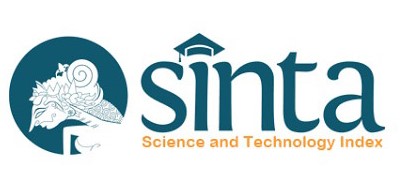Patients Perceptions of Opioid Use for Chronic Lower Back Pain in Rural Guatemala
Abstract
Background: Chronic lower back pain is a common cause of disability. Opioids, although not first-line treatment, are often prescribed for chronic lower back pain. The purpose of this study is to understand the perceptions of opioids among the rural Guatemalan population for chronic low back pain to best optimize a shared decision-making process in pain management.
Methods: Participants were given a survey regarding demographic information, whether they were offered an opioid prescription for chronic lower back pain, and whether they would take the medication if offered. Participants completed the Prescription Opioid Overdose Knowledge Score (Rx-OOKS) questionnaire, to evaluate knowledge of opioid overdose.
Result: The survey results showed that 93.3% of participants were never offered an opioid prescription for chronic low back pain by a provider in Guatemala. However, a majority would have taken an opioid if given the opportunity. Scores on the Rx-OOKS revealed a statistically significant lower mean (p< 0.05) than the United States’ study baseline for the knowledge of signs of prescription opioid overdose construct, actions to take in the opioid overdose construct, and total score construct.
Conclusion: This research study was able to show that although there is a low prevalence of opioid use in rural Guatemala and decreased knowledge of opioid overdose. Thus, physicians and other healthcare providers must do their due diligence to educate their communities about opioid use, opioid overdose, and naloxone use for a potential overdose. This process is essential in the development of a shared decision-making process for pain management.
Keywords
Full Text:
PDFReferences
Goldberg DS, McGee SJ. Pain as a global public health priority. BMC Public Health. 2011;11:770. doi:10.1186/1471-2458-11-770.
Bhadelia A, De Lima L, Arreola-Ornelas H, Kwete XJ, Rodriguez NM, Knaul FM. Solving the global crisis in access to pain relief: lessons from country actions. Am J Public Health. 2019;109(1):58-60. doi:10.2105/AJPH.2018.304769.
Chen S, Chen M, Wu X, et al. Global, regional and national burden of low back pain 1990-2019: a systematic analysis of the global burden of disease study 2019. J Orthop Translat. 2021;32:49-58. doi:10.1016/j.jot.2021.07.005.
Wu A, March L, Zheng X, et al. Global low back pain prevalence and years lived with disability from 1990 to 2017: estimates from the global burden of disease study 2017. Ann Transl Med. 2020;8(6):299. doi:10.21037/atm.2020.02.175.
Meucci RD, Fassa AG, Faria NM. Prevalence of chronic low back pain: systematic review. Rev Saude Publica. 2015;49:1. doi:10.1590/S0034-8910.2015049005874.
Freburger JK, Holmes GM, Agans RP, et al. The rising prevalence of chronic low back pain. Arch Intern Med. 2009;169(3):251-258. doi:10.1001/archinternmed.2008.543.
Nicol AL, Adams MCB, Gordon DB, et al. AAAPT diagnostic criteria for acute low back pain with and without lower extremity pain. Pain Med. 2020;21(11):2661-2675. doi:10.1093/pm/pnaa239.
Salvetti Mde G, Pimenta CA, Braga PE, Corrêa CF. Incapacidade relacionada à dor lombar crônica: prevalência e fatores associados [Disability related to chronic low back pain: prevalence and associated factors]. Rev Esc Enferm USP. 2012;46 Spec No:16-23. doi:10.1590/s0080-62342012000700003.
Sullivan MJL, Reesor K, Mikail S, Fisher R. The treatment of depression in chronic low back pain: review and recommendations. Pain. 1992;50(1):5-13. doi:10.1016/0304-3959(92)90107-M.
Becker BA, Childress MA. Nonspecific low back pain and return to work. Am Fam Physician. 2019;100(11):697-703.
Montgomery W, Sato M, Nagasaka Y, Vietri J. The economic and humanistic costs of chronic lower back pain in Japan. Clinicoecon Outcomes Res. 2017;9:361-371. doi:10.2147/CEOR.S134130.
Olafsson G, Jonsson E, Fritzell P, Hägg O, Borgström F. Cost of low back pain: results from a national register study in Sweden. Eur Spine J. 2018;27(11):2875-2881. doi:10.1007/s00586-018-5742-6.
Spears CA, Hodges SE, Kiyani M, et al. Health care resource utilization and management of chronic, refractory low back pain in the united states. Spine (Phila Pa 1976). 2020;45(20):E1333-E1341. doi:10.1097/BRS.0000000000003572.
Grabois M. Management of chronic low back pain. Am J Phys Med Rehabil. 2005;84(3 Suppl):S29-S41.
Chou R. Pharmacological management of low back pain. Drugs. 2010;70(4):387-402. doi:10.2165/11318690-000000000-00000.
Deyo RA, Von Korff M, Duhrkoop D. Opioids for low back pain. BMJ. 2015;350:g6380. doi:10.1136/bmj.g6380.
Boyle KL, Cary C, Dizitzer Y, Novack V, Jagminas L, Smulowitz PB. Reduction of opioid prescribing through the sharing of individual physician opioid prescribing practices. Am J Emerg Med. 2019;37(1):118-122. doi:10.1016/j.ajem.2018.09.052.
Daubresse M, Chang HY, Yu Y, et al. Ambulatory diagnosis and treatment of nonmalignant pain in the United States, 2000-2010. Med Care. 2013;51(10):870-878. doi:10.1097/MLR.0b013e3182a95d86.
Cook JL. The opioid epidemic. Best Pract Res Clin Obstet Gynaecol. 2022;85(Pt B):53-58. doi:10.1016/j.bpobgyn.2022.07.00.
Hornberger J, Chhatwal J. Opioid misuse: a global crisis. Value Health. 2021;24(2):145-146. doi:10.1016/j.jval.2020.12.003.
Schieber LZ, Guy GP Jr, Seth P, et al. Trends and patterns of geographic variation in opioid prescribing practices by state, united states, 2006-2017 [published correction appears in JAMA Netw Open. 2019 May 3;2(5):e194307]. JAMA Netw Open. 2019;2(3):e190665. doi:10.1001/jamanetworkopen.2019.0665.
Jairam V, Yang DX, Pasha S, et al. Temporal trends in opioid prescribing patterns among oncologists in the medicare population. J Natl Cancer Inst. 2021;113(3):274-281. doi:10.1093/jnci/djaa110.
Elder JW, Gu Z, Kim J, et al. Assessing local california trends in emergency physician opioid prescriptions from 2012 to 2020: experiences in a large academic health system. Am J Emerg Med. 2022;51:192-196. doi:10.1016/j.ajem.2021.10.029.
Robert M, Jouanjus E, Khouri C, Fouilhé Sam-Laï N, Revol B. The opioid epidemic: a worldwide exploratory study using the who pharmacovigilance database. Addiction. 2023;118(4):771-775. doi:10.1111/add.16081.
Jalali MS, Ewing E, Bannister CB, et al. Data needs in opioid systems modeling: challenges and future directions. Am J Prev Med. 2021;60(2):e95-e105. doi:10.1016/j.amepre.2020.08.017.
Ahmed E. Access to controlled medications: three country case reports. Journal of Illicit Economies and Development. 2021;2(1):44-52. doi:10.31389/jied.86.
Garcia JBS, Lopez MPG, Barros GAM, et al. Latin American Pain Federation position paper on appropriate opioid use in pain management. Pain Rep. 2019;4(3):e730. doi:10.1097/PR9.0000000000000730.
Lara-Solares A, Aguayo Zamora C, Amescua García C, et al. Latin-American guidelines for opioid use in chronic nononcologic pain. Pain Management. 2017;7(3):207-215. doi:10.2217/pmt-2016-0065.
Low back pain - orthoinfo - aaos. OrthoInfo. https://orthoinfo.aaos.org/en/diseases--conditions/low-back-pain/. Accessed February 28, 2023.
Shoup JA, Mueller SR, Binswanger IA, Williams AV, Strang J, Glanz JM. Modifying and evaluating the opioid overdose knowledge scale for prescription opioids: a pilot study of the rx-ooks. Pain Medicine. 2020;21(10):2244-2252. doi:10.1093/pm/pnaa190.
Swartz JA, Lin Q, Kim Y. A measurement invariance analysis of selected Opioid Overdose Knowledge Scale (OOKS) items among bystanders and first responders. PLoS One. 2022;17(10):e0271418. doi:10.1371/journal.pone.0271418.
Strasser R, Kam SM, Regalado SM. Rural health care access and policy in developing countries. Annu Rev Public Health. 2016;37:395-412. doi:10.1146/annurev-publhealth-032315-021507.
Douthit N, Kiv S, Dwolatzky T, Biswas S. Exposing some important barriers to health care access in the rural USA. Public Health. 2015;129(6):611-620. doi:10.1016/j.puhe.2015.04.001.
Spleen AM, Lengerich EJ, Camacho FT, Vanderpool RC. Health care avoidance among rural populations: results from a nationally representative survey. J Rural Health. 2014;30(1):79-88. doi:10.1111/jrh.12032
García CA, Santos Garcia JB, Rosario Berenguel Cook MD, et al. Undertreatment of pain and low use of opioids in Latin America. Pain Management. 2018;8(3):181-196. doi:https://doi.org/10.2217/pmt-2017-0043.
Vu PD, Malik A, Cohen AS, et al. Shared decision making in acute pain management in patients with opioid use disorder: a scoping review. J Clin Med. 2023;12(10):3555. doi: 10.3390/jcm12103555.
Chan L, Hart LG, Goodman DC. Geographic access to health care for rural Medicare beneficiaries. J Rural Health. 2006;22(2):140-146. doi:10.1111/j.1748-0361.2006.00022.x.
Gore M, Sadosky A, Stacey BR, Tai KS, Leslie D. The burden of chronic low back pain: clinical comorbidities, treatment patterns, and health care costs in usual care settings. Spine (Phila Pa 1976). 2012;37(11):E668-E677. doi:10.1097/BRS.0b013e318241e5de.
Beauchamp GA, Cuadrado HM, Campbell S, et al. A study on the efficacy of a naloxone training program. Cureus. 2021;13(11):e19831. doi:10.7759/cureus.19831.
Human Rights Watch (HRW). (2017). The Pain Behind the Opioid Crisis: UN Human Rights System Responses to Overdose Epidemics.
Traister E, Larson KL, Hagwood D. At the grave we make our song: a palliative care study in rural Guatemala. J Transcult Nurs. 2018 Jan;29(1):38-45. doi: 10.1177/1043659616674537.
Dowell D, Haegerich TM, Chou R. CDC guideline for prescribing opioids for chronic pain — United States, 2016. MMWR Recomm Rep. 2016;65(No. RR-1):1–49. doi: http://dx.doi.org/10.15585/mmwr.rr6501e1.
Keyes KM, Cerdá M, Brady JE, Havens JR, Galea S. Understanding the rural-urban differences in nonmedical prescription opioid use and abuse in the United States. Am J Public Health. 2014;104(2):e52-9. doi: 10.2105/AJPH.2013.301709.
DOI: http://dx.doi.org/10.21776/ub.jap.2023.004.03.01
Refbacks
- There are currently no refbacks.

This work is licensed under a Creative Commons Attribution 4.0 International License.









.png)

